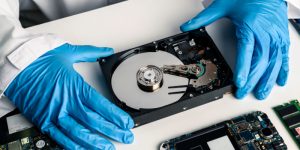Imagine the scene from a detective series: There are no fingerprints or DNA to be found, only a trailing of digital footprints. The fascinating world of computer forensics awaits you. But this is not just for hackers or coding experts. This field also requires a bit of curiosity, patience, and a keen eye for details. Visit Computer Forensics for Dummies before reading this.

Let’s begin with the basics. Computer forensics is the extraction of evidence from digital environments. This can be your laptop, phone, or even cloud. To determine who, what and when an event occurred, you need to collect enough evidence.
What is the best way to go about this?
You will need the proper tools. It’s like when you cook: the right ingredients will make a big difference. Just a few of the tools in your arsenal include disk analysis software, memory imaging programs and data recovery applications. Hardware write-blockers are also important, as they prevent the data from getting altered. No one intentionally wants to alter the evidence.
Be careful before diving into the depths. Imagine the horror of a crime-scene investigator who bursts into the room to rearrange the furniture and tries to inspect the scene. This is exactly what we are trying to avoid. You should always make an exact copy of any data you intend to examine. You can use forensic imaging software to copy drives bit by bit. It ensures that the original data will remain untouched, which is crucial in case it goes to court.
Consider it as if you were spelunking into a cavern. Use your flashlight to shine in every corner. Files deleted? Files are not necessarily deleted. With the right tools, they can be resurrected. EnCase, FTK and other tools can help you recover deleted files or create timelines.
Don’t forget logs. All digital breadcrumbs, whether they are system logs or network logs. You can find out who did what and when. Sometimes, you even know from where. They are useful because you can rewind the events in a log, like on a DVR.
The use of encryption and passwords can both be a blessing and a curse. Computer forensics can pick the locks that users think are protecting their secrets. Depending on the software, it is possible to crack passwords or unlock files. It can still be a cats-and-mouse match, since encryption levels are so high.
It is important to know the laws. You can be in serious trouble if you try to access someone else’s information without authorization. Do not let your hard-earned sleuthing be undone because of improper evidence collection.
While ethics may not be the most exciting subject to learn, in this case it is essential. To handle sensitive data in a responsible manner, you must respect privacy, maintain objectivity, avoid jumping to conclusions, and be respectful of others. Balance the importance of evidence and respect for data privacy is difficult.
Reporting follows. You’re not just dumping digital haystacks on someone else’s desk. Clear, concise and easily understandable. A clear narrative can be created using pie charts, timelines or screenshots.
Tech is your toolbox. Creativity is your guide. It’s possible to solve each case. Perhaps an odd filename or timestamp is all you need. Think outside of the box.
Alright, here’s a quick story. The year before, a close friend’s laptop was destroyed by a spilled cup of coffee. The laptop was still intact, but he had a vital file that he wanted to keep. I accessed undamaged areas of the hard disk using forensic tools. Felt a bit like a digital superhero!
Last but not least, keep yourself updated. It is a field that moves faster than a hare when it’s on sugar. As quickly as dandelions bloom in the spring, so do new threats, tools and methodologies. Subscribe to newsletters and webinars. Join forensic forums.
You’ve just completed a quick tour through the world of computer forensics. This kit is a great place to start if you are looking to solve crimes, or even just find out who made those funny cat pictures on your smartphone. Have fun!